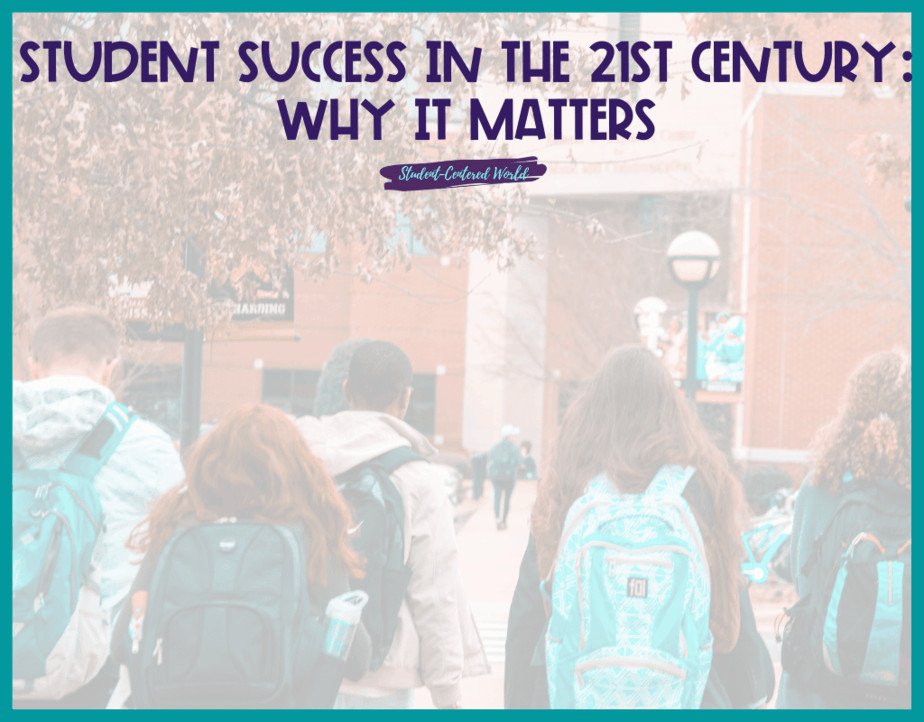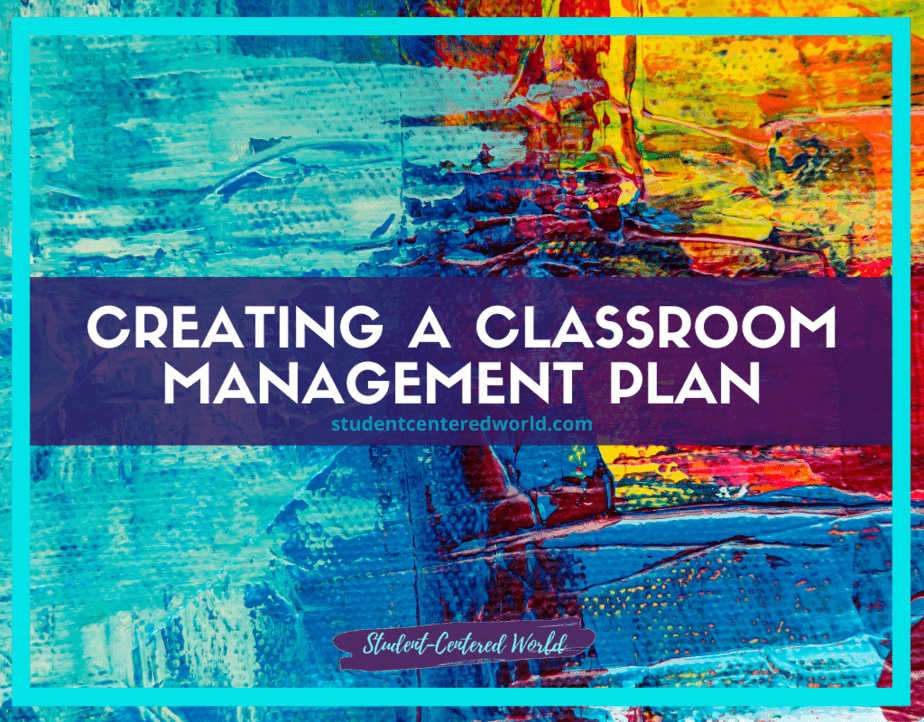What Does Student Success Mean in 21st-Century Education?
It’s interesting to consider how the pillars of student success have changed over the years.
Today my family was out taking a bike ride around our neighborhood. We live on a big, three-mile loop, so there are always people exercising. I mentioned to my husband that, while we were both working the other day (we share an office that overlooks the street), a pair of women went by on their bikes about 5 times. Kudos to them, for sure.
My husband made the comment that our road is flat without a lot of undulation.
I have a master’s degree but had absolutely never come across the word undulation before (don’t judge me!).
I asked him what it meant and he said it basically meant hills.
Then he got a checkmark under the argument about which one of us is smarter (to clarify, it’s a play argument we have that is ongoing because we both have common sense about entirely different things).
He laughed and said honestly, that he only knew the term because of golf.
Without skipping a beat, I replied, “It doesn’t matter how you learn it, just as long as you learn it.”
That right there summarizes both student-centered learning and the struggle many in education have with switching to that model…and why the focus needs to turn to student success and not regurgitation.
Let me explain:
The Definition of Student Success has Changed
In the 21st century, the notion of student success has undergone a transformative shift, reflecting a departure from traditional metrics such as graduation rates and academic goals. Higher education institutions, guided by a holistic approach, now recognize the multifaceted nature of student success. Academic advisors, once primarily focused on degree completion, have evolved into success coaches employing a growth mindset.
The emphasis is no longer solely on academic support programs but extends to a comprehensive student experience that incorporates mental health, time management, and career paths.
This shift has been catalyzed by new research and data points, challenging higher education leaders to reassess best practices and implement systemic changes.
One of the significant changes is the acknowledgment that a student’s success is not solely determined within the confines of a degree program. The Division of Student Success within larger institutions has become a starting point for a more expansive student success initiative, integrating support services, privacy policies, and student engagement strategies.
This broader perspective recognizes that the college experience encompasses diverse student needs, extending beyond academics.
Success is now measured by continuous support, student progress, and the cultivation of a supportive campus community. Campus partners, including student affairs and school districts, collaborate to address big questions surrounding student persistence, enabling young adults to navigate the complexities of their first year and beyond.
Financial aid, once viewed primarily as a means to facilitate degree completion, is now recognized as a critical component in supporting student success. Higher rates of success are achieved when financial aid is complemented by a network of support services that address the evolving challenges faced by undergraduate students.
A focus on the whole student has prompted a reevaluation of the college experience, with higher education professionals placing increased emphasis on a student’s overall well-being. We need to make sure that this trickles down into the K-12 experience as well so we can continue to prepare our students for the world that awaits them.
This holistic approach extends beyond the academic sphere, fostering a campus environment that nurtures personal and professional development. The success of this paradigm shift is evident in higher rates of student outcomes and the realization that a good job is not only a measure of degree completion but also a reflection of a well-rounded and supported student.
The past decade has witnessed a significant departure from the conventional understanding of student success, paving the way for a more inclusive and dynamic approach to higher education.
The future of the job market
When public education first became common, we were very much an industrial society. Putting children in rows and allowing them to complete the same tasks, in the same way, was what prepared them for the world that awaited them. The concept of individual student success was not as vital as it was to just train the masses to be good workers.
However, even as decades passed, it was still how so many of us were taught to teach because it’s what education was.
However, our entire worldview has changed since then.
We have become a tech-savvy, entrepreneurial society. What defines student success has changed completely…and it all comes back to what we not only value as a society, but the direction the world is headed.
Do you know what the top companies were going into 2019?
- Uber
- Lyft
- Palantir
- Slack
- Airbnb
- Postmates
- InstaCart
Most of these companies didn’t even exist 10 years ago, let alone were household names.
How can we expect to teach students going into the world of Uber and Airbnb the same things that we taught students who were planning to find a job at a local company where they would work until retirement?
Don’t think that sounds reasonable? According to LinkedIn in 2015, the average worker had 10 different jobs before they retired and that number was expected to grow.
It’s simply not sustainable to teach our students the way previous generations learned.
It’s just not.

Defining Student Success
Truthfully, the concept of defining student success does, in fact, change as society changes. What was important a century ago has been long advanced upon and isn’t seen as important today.
While some factors ring true no matter the changes, ie. accomplishing tasks, goals, and being prepared for the future that awaits, what those specifics are have changed greatly for each generation that has come through our schools.
The definition of student success is a complex one. Although it varies from school to school and even student to student, we believe that when students are well-prepared for their future goals and feel empowered to achieve them, they are more likely to be successful.
Let’s start with some basics. What comes to mind when you see the word “successful”? A popular movie star? A famous athlete? A business mogul? Success does not mean simply attaining wealth or fame; rather, it is a much deeper concept. We want to feel fulfilled in our jobs, satisfied with the relationships we have cultivated, and content with the lives we are living. And while success is always unique to each individual person, there are some common behaviors that many successful people share.
Let’s break down some of these traits:
1) They invest in themselves * Always growing their knowledge and skills
2) They take responsibility for their actions and the consequences of those actions
3) They put in lots and lots of effort while maintaining discipline and focus
4) They are persistent despite obstacles or failures * You often hear success stories that start with “I failed X number of times before succeeding.”
5) Their behavior is highly ethical and honest
6) They are constantly improving and looking for opportunities
7) They treat everyone with kindness * Even those they don’t like
8) They look for ways to give back and help others succeed as well
9) They care about their own personal development and progress * You can see this in those who naturally invest time in becoming better versions of themselves
10) They are able to maintain a positive attitude no matter how difficult their tasks or life gets
Teaching Our Future Generations
This is where I come back to the point that I made on my bike ride:
“It doesn’t matter how you learn it, just as long as you learn it.”
I am not sure why there’s such resistance to this in education. As our definition of student success changes as per the norms of the world we live in, the way in which we foster that success must stay updated as well.
Lately, I’ve been chatting with a lot of teachers on social media about burnout, their schools, and their administration. I’ve noticed one thing that stands out in all my conversations:
Schools (in a direct reflection of their administration) are either on-point and rock stars or hot pits of a stressed-out mess.
The ones that fall into the latter? They’re holding on to methods that are outdated and are not working for our students.
Again, they’re not working for our students.
Take a look at this video and let it soak in for a minute:
This article from Best Colleges lays it out better than I’ve seen before (even with my own article about Generation Z).
I think this quote is especially telling:
Today’s young professionals also value diversity. Sparvell noted that “diversity, inclusion, and belonging are core values for Generation Z, and how businesses represent these values will impact their ability to attract and retain an entire generation of talent.” This is especially important given that approximately half of Gen Z in the United States is nonwhite, according to the Pew Research Center, making it the most diverse generation in American history.
If businesses are making a switch to be sure that they’re appealing to the next generation who will be working for them, then as teachers, shouldn’t we be doing everything we possibly can to prepare each and every one of them to rise up and be prepared to excel in the field of their choice??
I especially love this infographic they use:

BY REECE JOHNSON
Published on July 01, 2019
STUDENT SUCCESS WITH OUR CURRENT STUDENTS
I go over this in detail in our course “A Passion for Progress“, but the first thing you absolutely must do with this generation of students to help improve their chances of modern-day success is to find out their individual learning styles.
Once you have this information, your classroom potential is literally at your fingertips.
When you know how your students are learning, you have the ability to tweak assignments or activities to appeal to the way they will understand the information the best.
You can have multiple versions of the same assignment with minimal effort on your part and each student in your class will be able to work on it in a way that benefits them the most.
Differentiated education at its finest…and a direct path to student success.
Once your students are used to it? Your classroom begins to run itself and is quite impressive to your administrator during observations.
So again, it doesn’t matter how you learn it, just as long as you learn it.
Should be the mantra in all of our schools, shouldn’t it?
So as teachers, how can we foster student success and emphasize the importance of goals and grit? We can enhance student voice and choice in our classrooms; we can highlight the benefits of peer collaboration; we can teach students to react responsibly to mistakes and not give up easily. We can emphasize that what you accomplish is more important than how long it takes you.
And finally, we must provide opportunities for student success for all by embracing diversity and ensuring every child feels included in the classroom.
By understanding what success means to us and how it can be achieved, we can prepare students not only for their present but also their future student success. Teaching students about goal setting, grit, and resilience allows them to flourish within a society that is constantly changing and full of obstacles they will need to overcome.
Stop Driving the Teacher Struggle Bus
Are you struggling with student engagement, apathy, or keeping your class on track?
💫💫 There’s hope! 💫💫
Join my free teacher workshop “Choosing Choice” and in just 60 minutes, you’ll craft a practical plan to revitalize your teaching. Discover the magic of student choice in boosting engagement, gain quick implementation ideas, and explore strategies for year-long success.
Unlike overwhelming workshops, my approach guides you in real-time, providing more classroom options, reducing stress, and giving you more personal time.
Plus, you’ll earn a 1-hour professional development certificate and have 7 days of access.
Don’t miss this chance to transform your teaching; click below to secure your spot now!
This article was originally published on January 21, 2020






